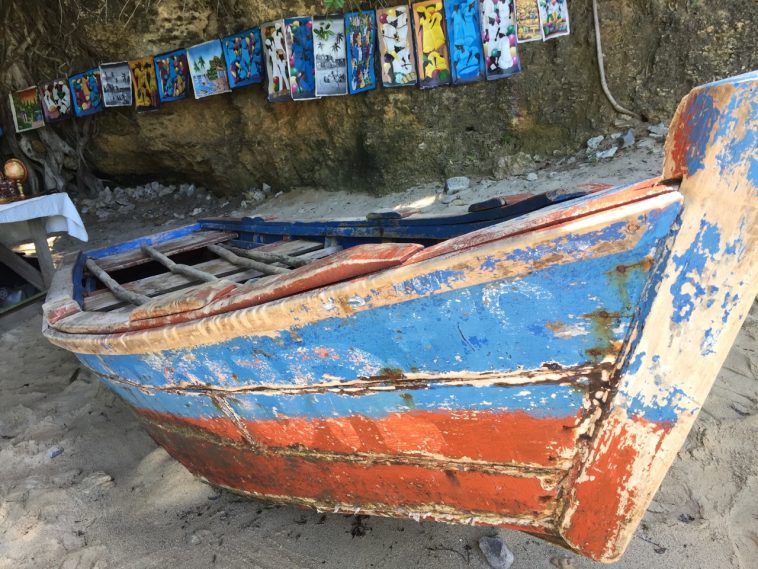It’s been little over a month since Haiti was rocked by an earthquake of epic proportions. I have long been interested in Haiti—its people, its history, its art, its surviving against the odds. Having been in my own natural disaster (a flood) I know how long it took us to get anywhere back to normal after that. This Haitian disaster is on an apocalyptic scale compared to our 35-foot puddles of water filling the streets from Hurricane Agnes in 1972.
I felt the need? urge? compulsion? to try to write a poem, my own pitiful effort to find some sense in a tragedy on a scale beyond what the human heart can bear, but somehow does. Then I read an amazingly poetic article in the New York Times about the anonymous burying of so many dead in a culture that believes so much in the human soul and its spiritual afterlife. The poem is called “Ayiti: A Lament in Three Parts.” Ayiti is the Creole name for Haiti. What’s below is the first section.
1. Here all the dead remain nameless
and uncounted,
absent any dignified
goodbyes. A hole
in the ground bears
teeth marks from
a backhoe, lights
rigged on the
edge like bug eyes so
deliveries can
arrive all night.
A newspaper says,
legs and arms
of strangers are knotted together
in a frozen dance.
No celebration
here,
in this field
where cows
again will graze.
One journalist
makes a list,
instructs me to look and see.
As if my own
writing, the words—
photo of a man in
a silver tie,
baby’s passport,
leg of purple
pantyhose—can
ever replace
A
person.
In this land of
high mountains,
they have buried
so many—
the coffin maker
said, like dogs.
And they are
digging holes for more.
The above photo was taken by Master Sgt. Jeremy Lock, USAF, in
Jacmel, Haiti on January 17, 2010 and is in the public domain because
it is a work of the U.S. Government.
- Publication News: Two Poems in the Halfway Down the Stairs 20th Anniversary Issue - September 17, 2025
- Fog and Pelicans and the Central Coast of the Olympic Peninsula of Washington State… - September 5, 2025
- Acceptance News: American Writers Review - September 3, 2025

